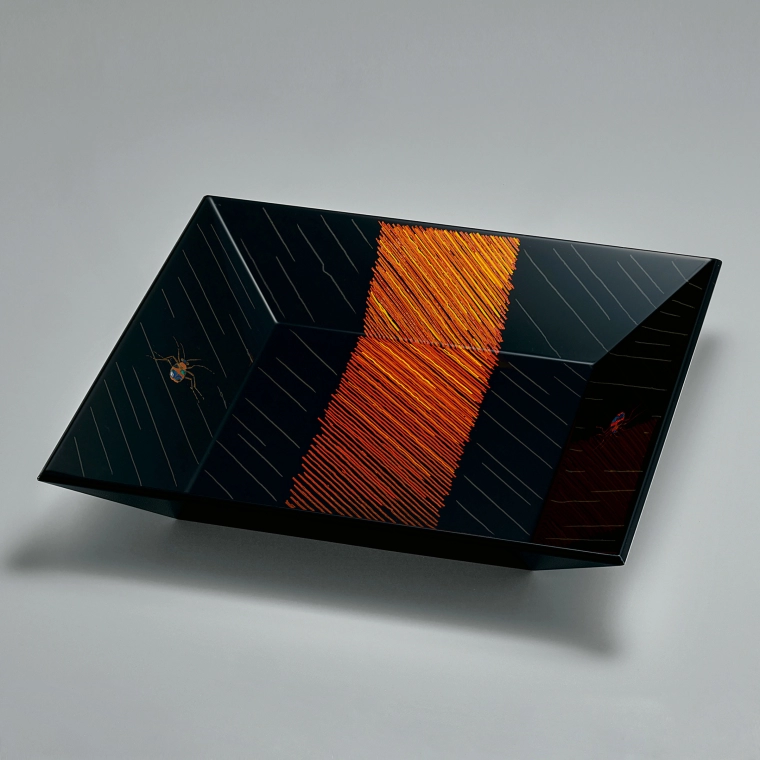Square Tray with Woodland Design in Kinma
H 4.3 x W 22.5 x D 22.5 cm,Year.2023- according to today's currency rate
- shipping fees not included
Yoshito Yamashita
1951 -- Lacquerware(Living National Treasure)
- Price Range Please Inquire
- Awards at Japan Kōgei Assoc. Exhibitions : 4
Description
-
CategoryLacquerware
-
DimensionsH 4.3 x W 22.5 x D 22.5 cm
-
Year presented2023
-
RarityUnique
Techniques Used
Maki-e
Maki-e (literally “sprinkled pictures”) is a representative lacquerware technique that originated in Japan around 1,200 years ago. Maki-e is done by painting lacquer motifs on the surface of a piece using a fine brush and then sprinkling gold powder onto the lacquer before it hardens, producing luxurious decorations.
Kinma
There are three basic variations of kinma based on the method used for cutting the motifs: line cutting, dot cutting, and a combination of the two. All three types use a special carving blade known as a kinma ken. Originally, kinma only consisted of motifs made of incised lines. However, by combining a variety of colored lacquers and cutting techniques, the art has lent itself to increasingly complex designs.
Selected exhibitions
- The 40th Lacquerware Traditional Kōgei Exhibition (2023)
- Selected

